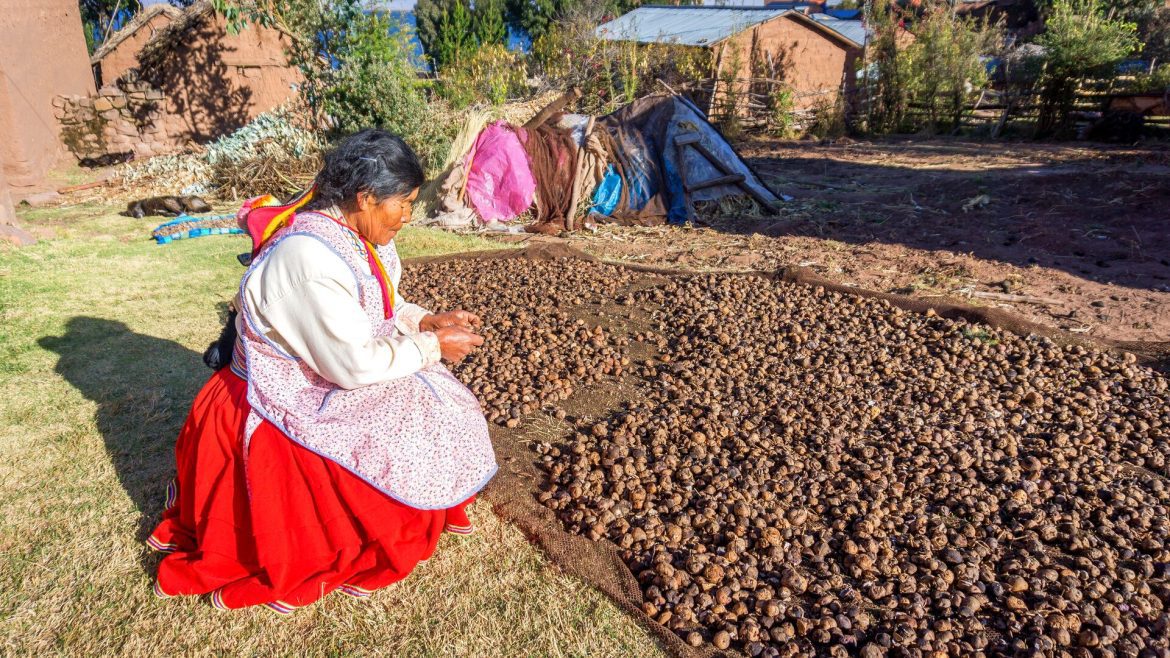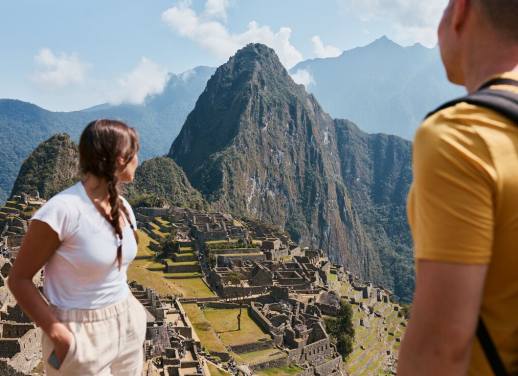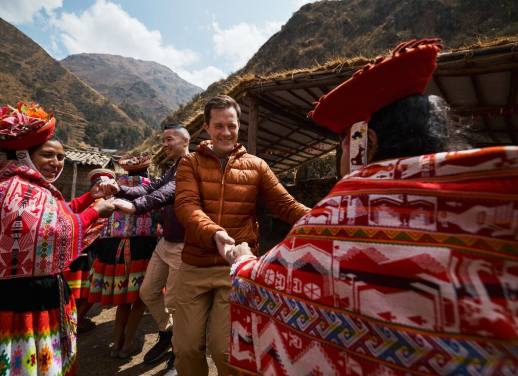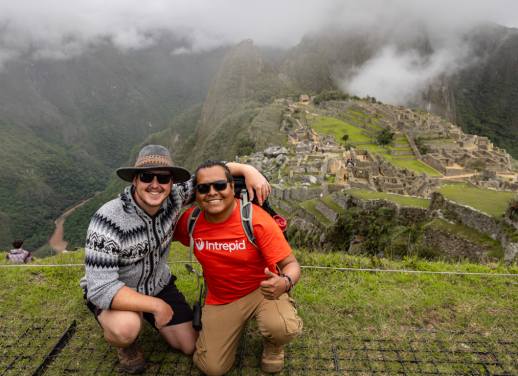Locals say this Andean lake is the only place on earth where you can get altitude sickness and seasickness at the same time. Travel writer Katie Lockhart explains how a homestay with a Llachon family impacted her in ways she least expected.
We’ve just finished the bumpy seven-hour bus journey from Cusco to Puno, the gateway city to Lake Titicaca. It’s nearing the end of our Classic Peru trip with Intrepid, and my group is feeling a mix of excitement and mild anxiety about our upcoming homestay. When our trip leader, Daniel, tells us we’ll be staying with a family in a traditional mud-brick home, I picture mud walls and mattresses on the floor – but I’m in for a surprise.
That morning, we had left our luggage at the hotel in Puno, packed an overnight bag and made our way to Puno Port to begin the journey to our first stop: the Floating Islands of Uros. Everyone had their fingers crossed for calm waters. Viracocha, the supreme creator god in Andean mythology and closely connected to the lake, must have heard us, because the ride is a breeze. As we drift in, I can see a group of vibrantly dressed people waiting to greet us.
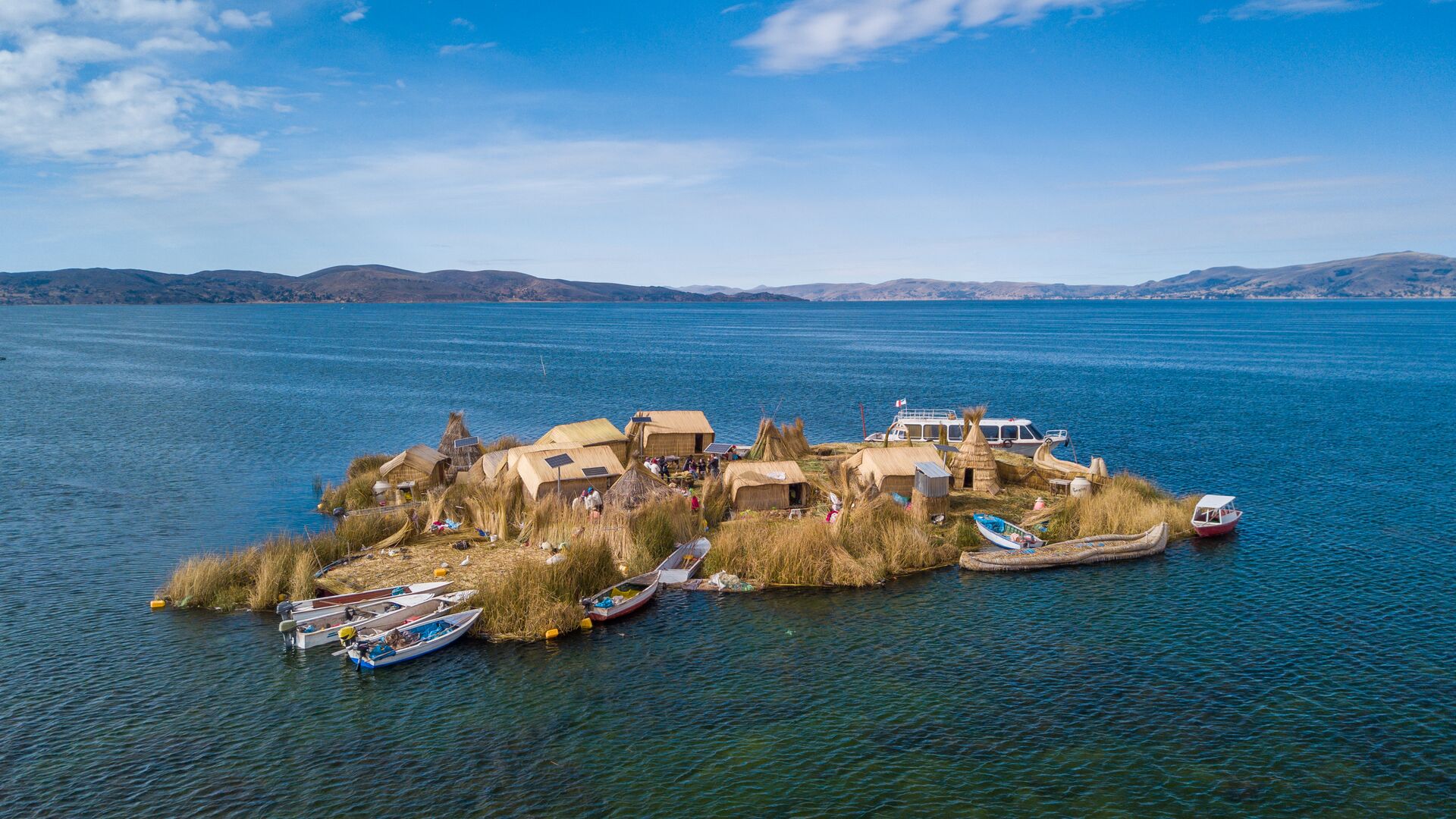
Learning about life on the Floating Islands of Uros
The Floating Islands of Uros, home to the Indigenous Uros people – among the earliest inhabitants of the lake – consist of over 100 manmade islands built from layers of totora reeds. The totora plant grows in the lake’s shallows and is the community’s lifeline – the reeds are used to build boats, islands and homes, while the roots and flowers make food, tea and medicine.
After a warm welcome with firm handshakes, we gather in a communal area surrounded by five small reed huts. The island’s president begins to speak in Quechua, one of the primary languages spoken by the Uros people along with Aymara and Spanish.
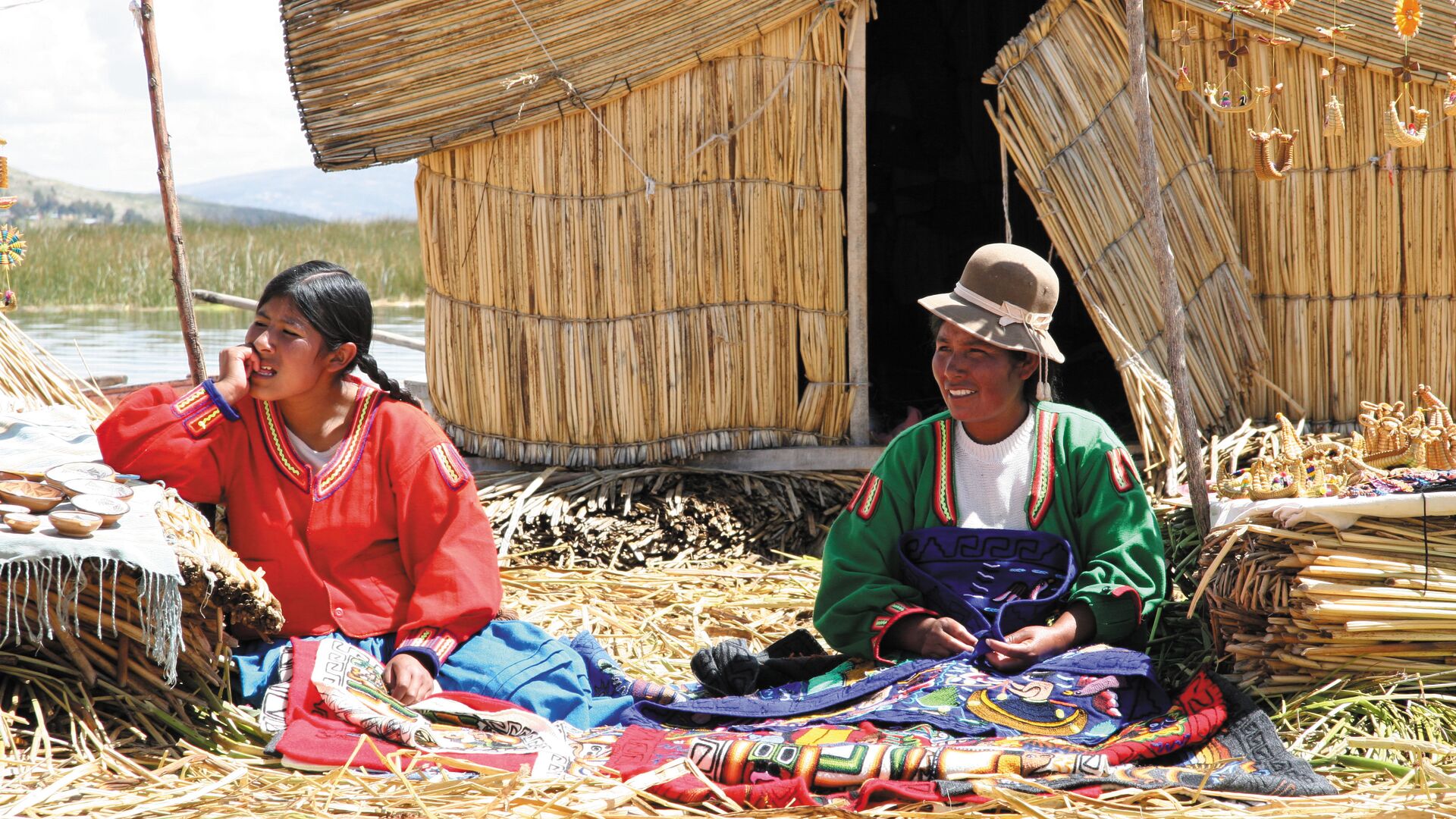
With help from Daniel to translate, we learn their names, how many family members they live with and which home is theirs. They also share that many of their children have graduated from the local island school and moved to Puno to attend college. The president passes around a fried dough snack, which we happily devour, before we split into smaller groups.
My group is paired with Sonia, who shows us around her hut, no bigger than a single bedroom, shared between four family members. During the day, while her children are at school, she makes textiles; after sundown, the radio serves as the family’s only source of entertainment. I could spend all day learning about the Uros community’s unique way of life, but our homestay hosts are expecting us. As we jump back on the boat and float away, we reflect on how much of their lifestyle remains unchanged, aside from the odd cellphone or solar panel.
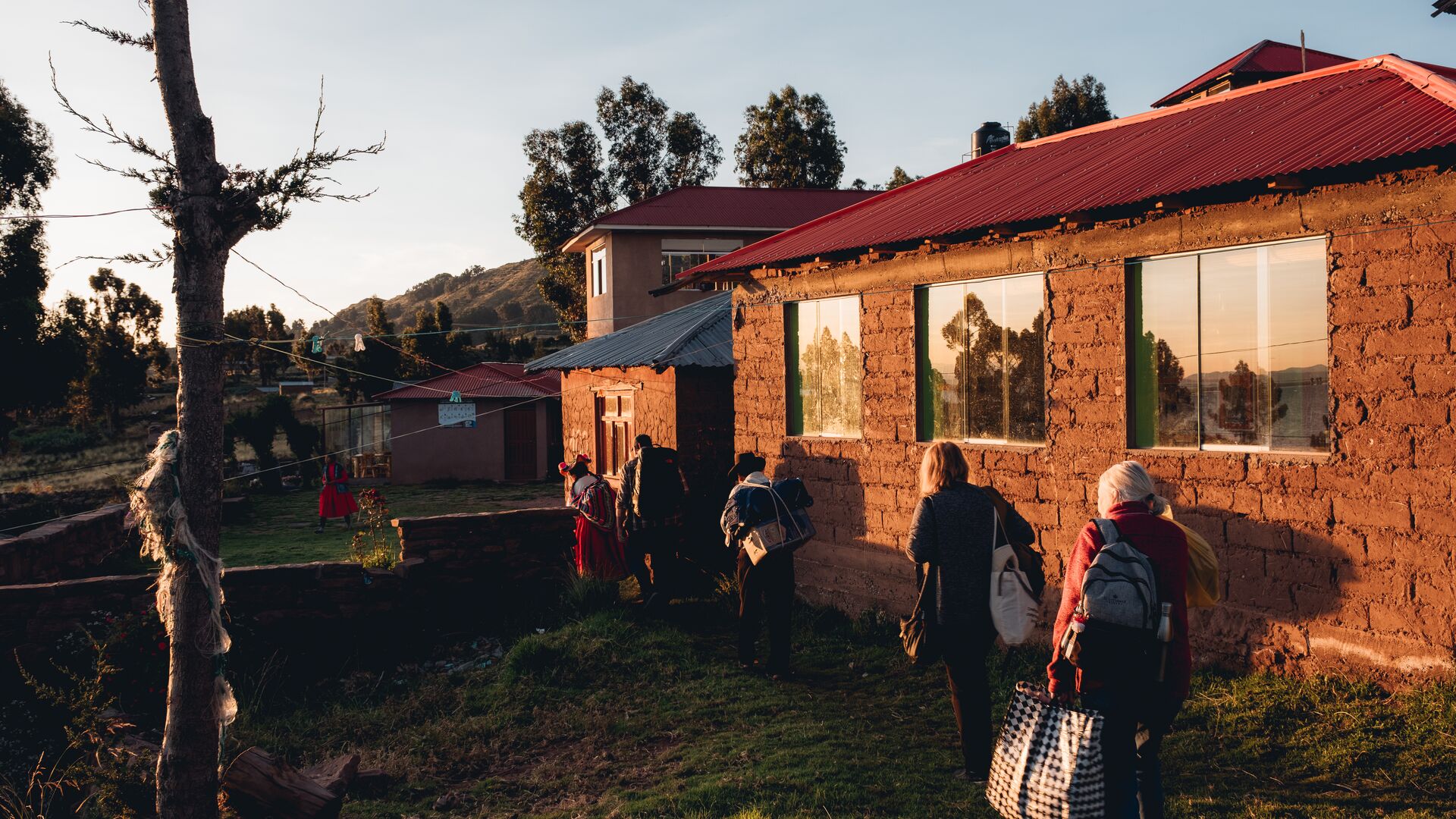
Meeting our Llachon family
After 45 minutes, we arrive at Llachon, a community of 5000 people on Titicaca’s northwestern shore. Our host mothers and fathers greet us along the rocky lakeside while donkeys hee-haw in the distance. Daniel explains that the families here can be shy, but hosting travellers allows them to connect with people and cultures from around the world and provides an important source of income.
My partner Pat and I are paired, very grandly, with Magno, the community’s president. We follow him up a steep hill, taking in the views of the lake and the surrounding mountains of the Altiplano plateau, before arriving at his home.
Magno’s house is part of a large compound with three guest bedrooms and indoor plumbing, but many huts in the community don’t have running water or electricity. Once we’re settled in, he invites us to help with some chores. We wash purple potatoes for dinner (a local delicacy), help build a small rock wall to keep wild animals away and lead his goats down to the lake for a drink. We quickly learn he has an infectious smile and a kind, patient heart.



With all the chores done, we join the villagers on the court for a game of volleyball – though Daniel jokes we don’t stand a chance against the locals. We play a best-of-three match, and if one of the travellers hadn’t offered a local girl another serve, I reckon we would’ve won. It becomes a running joke that the girl tricked us into thinking she couldn’t play, but was actually a volleyball star the entire time.
My appetite well and truly roused, I eagerly muck in with dinner prep. It becomes a community effort; I snap peas, Pat chops carrots and half a dozen women from the community are busy cooking in the kitchen. An hour later, they emerge with a feast of quinoa soup, grilled chicken and a veggie salad. We polish off the lot as golden hour light washes over Titicaca.
With full bellies, we meander back to Magno’s house. I am a bit worried I’ll be chilly as the homes don’t have heating, but the beds are piled high with thick alpaca wool blankets and a hot-water bottle keeps us nice and toasty.
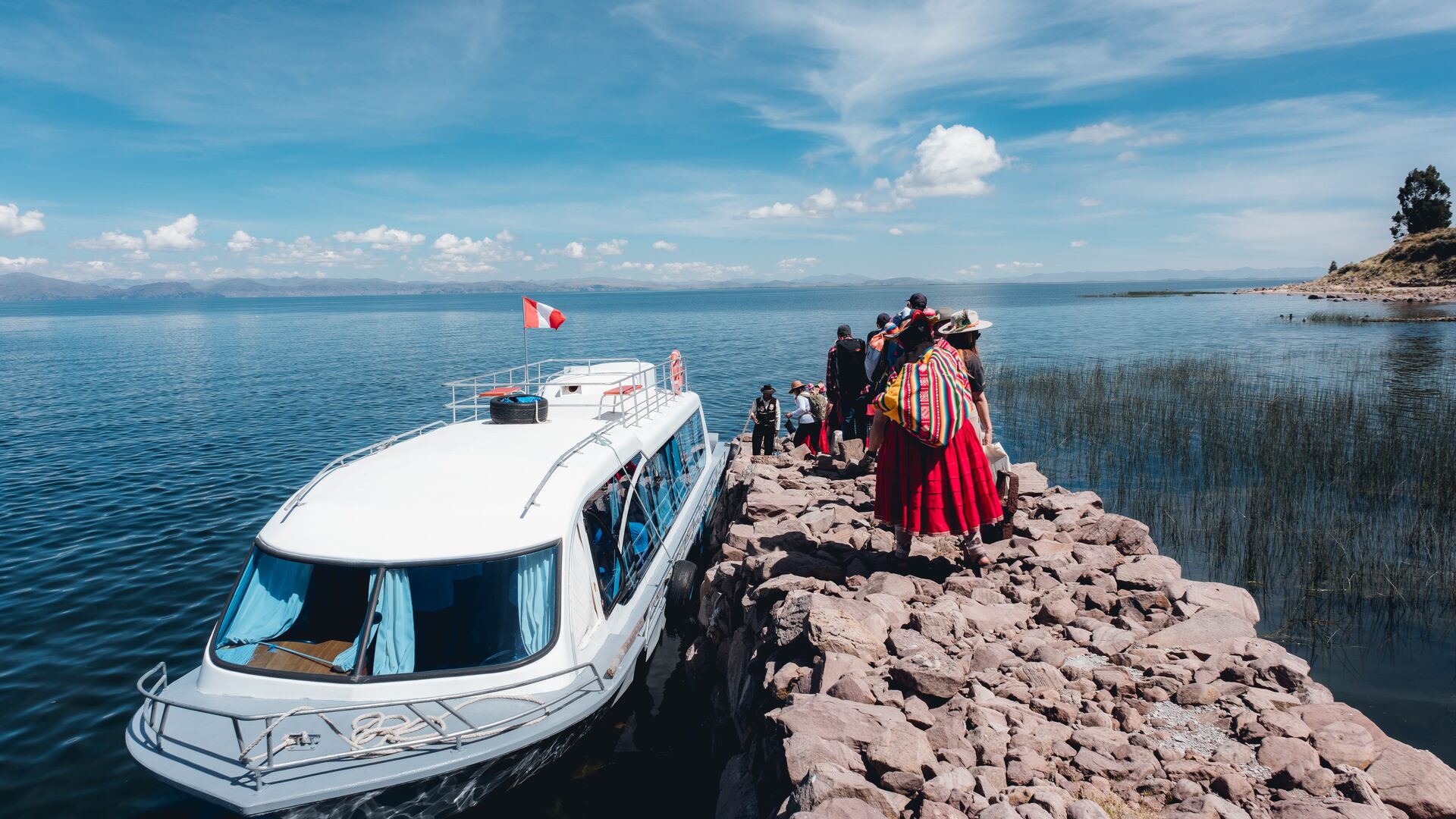
Flowers for safe travels
The next morning, we wake up early for a breakfast of Andean peppermint tea, hard-boiled eggs and fried bread with jam, so addictive we finish the entire basket. We take a family photo with Magno, then slowly make our way down to the lake where our boat waits to take us back to Puno.
After exchanging warm hugs, the community gives us cantua flowers – Peru’s national bloom, also known as ‘the Sacred flower of the Incas’ – and tells us to offer them to the water to ensure a safe passage. So, as instructed, we each take turns scattering the flowers from the window as we watch the community shrink into the distance.
Back on dry land, as we gather on the last night of the trip, the group reminisces about our favourite moments. Most of us agree that while nothing can quite top Machu Picchu, meeting the people of Lake Titicaca is a close second. Visiting the Uros people on their floating reed islands and spending the night with the Llachon community leaves a lasting impression – one we couldn’t have expected.
Experience life on one of the world’s highest lakes and connect with local communities on a small group adventure on Lake Titicaca.

